| ||||||||||||||||||||||||||||
CURATOR INDEX
|
|
STATUS: Forthcoming | 2/24/2026 This title is not yet published in the U.S. To pre-order or receive notice when the book is available, please email orders @ artbook.com |
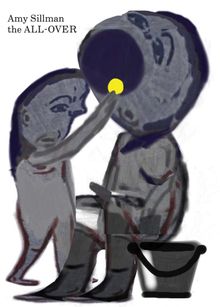 Amy Sillman: The ALL-OVER
Amy Sillman: The ALL-OVER
Published by Dancing Foxes Press/Portikus, Frankfurt.
Text by Yve-Alain Bois, Manuela Ammer. Interview by Fabian Schöneich.
New York–based Amy Sillman (born 1955) is one of the most beloved and quietly influential contemporary American artists. The ALL-OVER provides a comprehensive overview of her most recent bodies of work, including painting and serially exhibited large-scale abstractions, as well as diagrams, drawings, animations and sculpture.
The title of the book, and the exhibition it accompanies at Frankfurt's Portikus, refers to a concept often used to describe abstract painting (the classic instance of which is the work of Jackson Pollock). Much of Sillman’s oeuvre can be categorized as such, although her abstractions often suggest recognizable forms and figures. In the 24-canvas series Panorama, motifs seem to run continuously around the walls of the exhibition space, but in fact are repeated prints of the artist’s drawings with painterly interventions. The materiality is lost through the superimposition of print and oil paint; what remains is pure color and gesture. Also present here are stills from an animation developed by Sillman to be exhibited alongside Panorama and an insert made especially for the book by the artist. Alongside essays by Manuela Ammer, Yve-Alain Bois and Sillman herself. The book includes a conversation with the artist by Fabian Schöneich.
PUBLISHER
Dancing Foxes Press/Portikus, Frankfurt
BOOK FORMAT
Hardcover, 7.75 x 10.5 in. / 164 pgs / 95 color.
PUBLISHING STATUS
Pub Date 9/26/2017
Out of stock indefinitely
DISTRIBUTION
D.A.P. Exclusive
Catalog: FALL 2017 p. 121
PRODUCT DETAILS
ISBN 9780998632629 TRADE
List Price: $40.00 CAD $54.00 GBP £35.00
AVAILABILITY
Not available
STATUS: Out of stock indefinitely. |
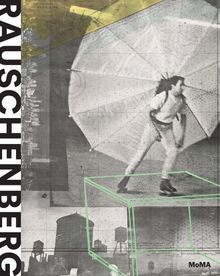 Robert Rauschenberg
Robert Rauschenberg
Published by The Museum of Modern Art, New York.
Edited with text by Leah Dickerman, Achim Borchardt-Hume. Text by Yve-Alain Bois, Andrianna Campbell, Hal Foster, Mark Godfrey, Hiroko Ikegami, Branden Joseph, Ed Krcma, Michelle Kuo, Pamela Lee, Emily Liebert, Richard Meyer, Helen Molesworth, Kate Nesin, Sarah Roberts, Catherine Wood.
The early 1950s, when Robert Rauschenberg launched his career, was the heyday of the heroic gestural painting of Abstract Expressionism. Rauschenberg challenged this tradition, inventing new interdisciplinary models of artistic practice that shaped the decades to come. Published in conjunction with this century's first retrospective of this defining figure in postwar art, this richly illustrated catalog reframes Rauschenberg’s widely celebrated Combines (1954–64) and silkscreen paintings (1962–64) in fresh ways. It also illuminates lesser-known periods within Rauschenberg’s career, including his work of the early 1950s and that from the late 1960s onward, now compelling and prescient to contemporary eyes.
Sixteen short essays by eminent scholars and emerging new writers focus on specific moments throughout Rauschenberg’s career, exploring his creative production across an extraordinary range of media and following him on his travels around the globe. Integrating new scholarship, documentary imagery and archival materials, Robert Rauschenberg is the first comprehensive catalogue of the artist’s career in 20 years, an important contribution to American cultural and intellectual history and a necessary volume for anyone interested in contemporary art.
Over the span of six decades, Robert Rauschenberg (1925–2008) worked in an astonishing range of mediums including painting, sculpture, prints, photography and performance. Working alone and in collaboration with artists, dancers, musicians and writers, Rauschenberg produced a vast body of work that set the course for art of the present day.
Leah Dickerman is Director of Editorial & Content Strategy at The Museum of Modern Art, New York.
Achim Borchardt-Hume is Director of Exhibitions at Tate Modern, London.
Yve-Alain Bois is Professor of Art History at the School of Historical Studies, Institute for Advanced Study, Princeton University.
Andrianna Campbellis a doctoral candidate in the Department of Art History at the CUNY Graduate Center, where she specializes in American art in the modern and contemporary period.
Hal Foster is American art critic and historian.
Mark Godfrey is Curator of Contemporary Art at Tate Modern, London.
Hiroko Ikegami is Associate Professor in the Graduate School of Intercultural Studies at Kobe University and specializes in post-1945 American art and its global impact.
Branden Joseph is Frank Gallipoli Professor of Modern and Contemporary Art in the Department of Art History and Archaeology at Columbia University.
Ed Kr?ma is Lecturer in History of Art at the School of World Art and Museum Studies, University of East Anglia and co-editor of Enclave Review.
Michelle Kuo is Professor in the History, Law, and Society program at the American University of Paris on issues related to race, punishment, immigration and the law.
Pamela Lee is Carnegie Professor of Modern and Contemporary Art at Yale University.
Emily Liebert is an American author. Her most recent novels are You Knew Me When (2013), When We Fall (2014), Those Secrets We Keep (2015) and Some Women (2016), all with Penguin Random House and Pretty Revenge (2019) with Simon & Schuster.
Richard Meyer is Robert and Ruth Halperin Professor in Art History at Stanford University.
Helen Molesworth is former Chief Curator at The Museum of Contemporary Art, Los Angeles.
Kate Nesin is an art historian based in New York.
Sarah Robertsis Assistant Professor of Information Studies at the University of California Los Angeles.
Catherine Wood is Senior Curator of Contemporary Art and Performance at Tate Modern."
PUBLISHER
The Museum of Modern Art, New York
BOOK FORMAT
Paperback, 9.5 x 12 in. / 392 pgs / 375 color.
PUBLISHING STATUS
Pub Date 5/23/2017
Active
DISTRIBUTION
D.A.P. Exclusive
Catalog: SPRING 2017 p. 10
PRODUCT DETAILS
ISBN 9781633450219 TRADE
List Price: $55.00 CAD $72.50
AVAILABILITY
In stock
in stock $55.00 Free Shipping UPS GROUND IN THE CONTINENTAL U.S. |
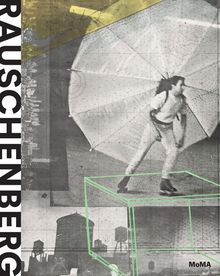 Robert Rauschenberg
Robert Rauschenberg
Published by The Museum of Modern Art, New York.
Edited with text by Leah Dickerman, Achim Borchardt-Hume. Text by Yve-Alain Bois, Andrianna Campbell, Hal Foster, Mark Godfrey, Hiroko Ikegami, Branden Joseph, Ed Krcma, Michelle Kuo, Pamela Lee, Emily Liebert, Richard Meyer, Helen Molesworth, Kate Nesin, Sarah Roberts, Catherine Wood.
The early 1950s, when Robert Rauschenberg launched his career, was the heyday of the heroic gestural painting of Abstract Expressionism. Rauschenberg challenged this tradition, inventing new intermedia forms of art making that shaped the decades to come. Published in conjunction with the inaugural 21st-century retrospective of this defining figure, this book offers fresh perspectives on Rauschenberg’s widely celebrated Combines (1954–64) and silkscreen paintings (1962–64). It also illuminates lesser-known periods within Rauschenberg’s career, including his work of the early 1950s and that from the late 1960s onward, now compelling and prescient to contemporary eyes.
Sixteen short essays by eminent scholars and emerging new writers focus on specific moments within Rauschenberg’s career, examining his creative production across an extraordinary range of media. Integrating new scholarship, documentary imagery and archival materials, Robert Rauschenberg is the first comprehensive catalogue of the artist’s career in 20 years, an important contribution to American cultural and intellectual history across disciplines and a necessary volume for anyone interested in art of the present day.
Over the span of six decades, Robert Rauschenberg (1925–2008) worked in an astonishing range of mediums including painting, sculpture, prints, photography and performance, and became one of the most transformative figures in postwar American culture. Working alone and in collaboration with artists, dancers, musicians and writers, Rauschenberg produced a vast body of work that continues to resonate today.
Leah Dickerman is The Marlene Hess Curator of Painting and Sculpture, The Museum of Modern Art. Achim Borchardt-Hume is Director of Exhibitions, Tate Modern. Yve-Alain Bois is Professor of Art History, Institute for Advanced Study, Princeton University. Andrianna Campbell is a Doctoral Candidate, CUNY Graduate Center. Hal Foster is Townsend Martin, Class of 1917, Professor of Art and Archaeology, Princeton University. Mark Godfrey is Senior Curator, International Art (Europe and Americas), Tate Modern. Hiroko Ikegami is Associate Professor, Graduate School of Intercultural Studies, Kobe University. Branden Joseph is Frank Gallipoli Professor of Modern and Contemporary Art, Art History and Archaeology, Columbia University. Ed Krcma is Lecturer in Art History, University of East Anglia. Michelle Kuo is Editor in Chief, Artforum International Magazine. Pamela Lee is Jeanette and William Hayden Jones Professor in American Art and Culture, Stanford University. Emily Liebert is Curatorial Assistant, Department of Painting and Sculpture, The Museum of Modern Art. Richard Meyer is Robert and Ruth Halperin Professor in Art History, Stanford University. Helen Molesworth is Chief Curator, The Museum of Contemporary Art, Los Angeles. Kate Nesin is Associate Curator, Art Institute of Chicago. Sarah Roberts is Andrew W. Mellon Associate Curator of Painting and Sculpture, San Francisco Museum of Modern Art. Catherine Wood is Senior Curator, International Art (Performance).
PUBLISHER
The Museum of Modern Art, New York
BOOK FORMAT
Hardcover, 9.5 x 12 in. / 392 pgs / 475 color.
PUBLISHING STATUS
Pub Date 12/6/2016
Active
DISTRIBUTION
D.A.P. Exclusive
Catalog: FALL 2016 p. 3
PRODUCT DETAILS
ISBN 9781633450202 TRADE
List Price: $75.00 CAD $99.00
AVAILABILITY
In stock
in stock $75.00 Free Shipping UPS GROUND IN THE CONTINENTAL U.S. |
 Morgan Fisher: Conversations
Morgan Fisher: Conversations
Published by Aspen Art Press.
Edited and with text by Jacob Proctor. Foreword by Heidi Zuckerman Jacobson. Contributions by Walead Beshty, Yve-Alain Bois, Stuart Comer, Christophe Gallois and Jean-Philippe Antoine, Melissa Gronlund, William E. Jones, Scott MacDonald, Frances Stark, Christopher Williams.
PUBLISHER
Aspen Art Press
BOOK FORMAT
Paperback, 6 x 9 in. / 192 pgs / illustrated throughout.
PUBLISHING STATUS
Pub Date 6/23/2015
Active
DISTRIBUTION
D.A.P. Exclusive
Catalog: SPRING 2013 p. 112
PRODUCT DETAILS
ISBN 9780934324588 TRADE
List Price: $30.00 CAD $40.00 GBP £27.00
AVAILABILITY
In stock
in stock $30.00 Free Shipping UPS GROUND IN THE CONTINENTAL U.S. |
 Cheyney Thompson: Metric, Pedestal, Landlord, Cabengo, Recit
Cheyney Thompson: Metric, Pedestal, Landlord, Cabengo, Recit
Published by Walther König, Köln.
Introduction by Paul C. Ha. Text by Simon Baier, Yve-Alain Bois, Ann Lauterbach. Interview by Joao Ribas.
PUBLISHER
Walther König, Köln
BOOK FORMAT
Hardcover, 9.5 x 11.75 in. / 200 pgs / 104 color / 52 bw.
PUBLISHING STATUS
Pub Date 6/30/2013
Out of stock indefinitely
DISTRIBUTION
D.A.P. Exclusive
Catalog: FALL 2012 p. 167
PRODUCT DETAILS
ISBN 9783863351540 TRADE
List Price: $59.95 CAD $79.00
AVAILABILITY
Not available
STATUS: Out of stock indefinitely. |
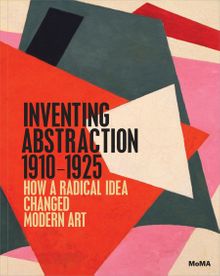 Inventing Abstraction, 1910-1925
Inventing Abstraction, 1910-1925
Published by The Museum of Modern Art, New York.
By Leah Dickerman. Text by Matthew Affron, Yve-Alain Bois, Masha Chlenova, Ester Coen, Christoph Cox, Hubert Damisch, Rachael DeLue, Hal Foster, Mark Franko, Matthew Gale, Peter Galison, Maria Gough, Jodi Hauptman, Gordon Hughes, David Joselit, Anton Kaes, David Lang, Susan Laxton, Philippe-Alain Michaud, Jaroslav Suchan, Lanka Tatersall, Michael R. Taylor.
PUBLISHER
The Museum of Modern Art, New York
BOOK FORMAT
Hardcover, 9.5 x 12 in. / 376 pgs / 446 color.
PUBLISHING STATUS
Pub Date 1/31/2013
Active
DISTRIBUTION
D.A.P. Exclusive
Catalog: FALL 2012 p. 16
PRODUCT DETAILS
ISBN 9780870708282 TRADE
List Price: $75.00 CAD $99.00
AVAILABILITY
In stock
in stock $75.00 Free Shipping UPS GROUND IN THE CONTINENTAL U.S. |
 Morgan Fisher: Two Exhibitions
Morgan Fisher: Two Exhibitions
Published by Walther König, Köln.
Edited and with introduction by Sabine Folie, Susanne Titz. Text by Thom Andersen, Rainer Bellenbaum, Sabeth Buchmann, Yve-Alain Bois, Morgan Fisher.
PUBLISHER
Walther König, Köln
BOOK FORMAT
Clth, 11 x 7.75 in. / 248 pgs / 149 color / 49 bw.
PUBLISHING STATUS
Pub Date 10/31/2012
Active
DISTRIBUTION
D.A.P. Exclusive
Catalog: SPRING 2013 p. 187
PRODUCT DETAILS
ISBN 9783863351694 TRADE
List Price: $55.00 CAD $72.50
AVAILABILITY
In stock
in stock $55.00 Free Shipping UPS GROUND IN THE CONTINENTAL U.S. |
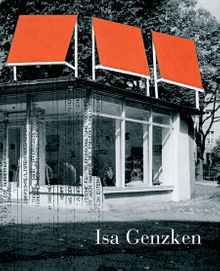 Isa Genzken: Open Sesame
Isa Genzken: Open Sesame
Published by Walther König, Köln.
Edited by Iwona Blazwick. Foreword by Kasper Koenig. Text by Yves-Alain Bois, Ulrich Loock.
PUBLISHER
Walther König, Köln
BOOK FORMAT
Hardcover, 9.25 x 11.25 in. / 248 pgs / 202 color.
PUBLISHING STATUS
Pub Date 8/31/2009
Out of print
DISTRIBUTION
D.A.P. Exclusive
Catalog: FALL 2009 p. 84
PRODUCT DETAILS
ISBN 9783865606105 TRADE
List Price: $66.00 CAD $80.00
AVAILABILITY
Not available
STATUS: Out of print | 5/28/2010 For assistance locating a copy, please see our list of recommended out of print specialists |
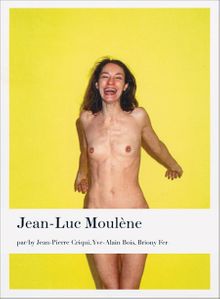 Jean-Luc Moulčne
Jean-Luc Moulčne
Published by Walther König, Köln.
Text by Jean-Pierre Criqui, Yves-Alain Bois, Briony Fer.
PUBLISHER
Walther König, Köln
BOOK FORMAT
Paperback, 9 x 11.75 in. / 172 pgs / 82 color / 12 bw.
PUBLISHING STATUS
Pub Date 8/31/2009
Out of print
DISTRIBUTION
D.A.P. Exclusive
Catalog: FALL 2009 p. 143
PRODUCT DETAILS
ISBN 9783865605894 TRADE
List Price: $45.00 CAD $60.00
AVAILABILITY
Not available
STATUS: Out of print | 00/00/00 For assistance locating a copy, please see our list of recommended out of print specialists |
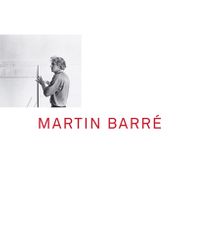 Martin Barré
Martin Barré
Published by Thea Westreich/Ethan Wagner.
Text by Yve-Alain Bois.
Martin Barré, the historically important artist, was born in Nante, France in 1924. His career spanned much of the latter half of the 20th century. He emerged on the Paris scene in the mid-1950's and died in 1993, at the age of 69. During his lifetime, important museums and galleries across Europe regularly exhibited his work. Barré effectively transcended the time when the ideals of Modernism gave way to the new spirit of contemporary art. And, as a contemporary artist, Barré's inventive and sensitive exploration of line, color and form and the two-dimensional surface formed a singular achievement in the history of abstract painting. In recent years, Barré has received international attention. In 2006 the Centre Pompidou hung three of its trove of Barré paintings with pride of place in one of its permanent galleries, along with work by Carl Andre, Agnes Martin and Robert Ryman. In its 2001 show, As Painting: Division and Displacement, the Wexner Center for the Arts prominently exhibited Barré's paintings with works by Daniel Buren, Donald Judd, Gerhard Richter, Robert Ryman and Jacques Villeglé. In 2008, he was featured in a one person show organized by Thea Westreich and Ethan Wagner at Andrew Kreps Gallery.
PUBLISHER
Thea Westreich/Ethan Wagner
BOOK FORMAT
Hardback, 11 x 10.25 in. / 160 pgs / 175 color / 30 bw.
PUBLISHING STATUS
Pub Date 8/1/2008
Out of print
DISTRIBUTION
D.A.P. Exclusive
Catalog: FALL 2008 p. 124
PRODUCT DETAILS
ISBN 9780615190891 TRADE
List Price: $45.00 CAD $55.00
AVAILABILITY
Not available
STATUS: Out of print | 00/00/00 For assistance locating a copy, please see our list of recommended out of print specialists |
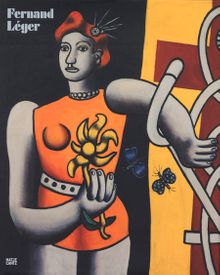 Fernand Léger: Paris-New York
Fernand Léger: Paris-New York
Published by Hatje Cantz.
Text by Yve-Alain Bois, Raphaël Bouvier, Christian Derouet, Brigitte Hedel-Samson, Philippe Büttner.
PUBLISHER
Hatje Cantz
BOOK FORMAT
Hardback, 10 x 12 in. / 208 pgs / 107 color / 3 bw.
PUBLISHING STATUS
Pub Date 9/1/2008
Out of print
DISTRIBUTION
D.A.P. Exclusive
Catalog: FALL 2008 p. 62
PRODUCT DETAILS
ISBN 9783775721615 TRADE
List Price: $75.00 CAD $90.00
AVAILABILITY
Not available
STATUS: Out of print | 00/00/00 For assistance locating a copy, please see our list of recommended out of print specialists |
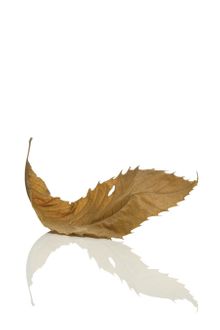 Peter Saville: Estate 1-127
Peter Saville: Estate 1-127
Published by JRP|Ringier.
Edited by Heike Munder. Text by Sean Snyder, Wolfgang Tilmans, Sarah Morris, Michael Bracewell.
Born in Manchester (U.K.) in 1955, Peter Saville studied graphic design at Manchester Polytechnic. He found early inspiration in the elegantly ordered aesthetic of Jan Tschichold, the German-born book and type designer who was to become the chief propagandist for the New Typography. In 1979 he co-founded Factory Records (with Tony Wilson), and in the following year he co-designed the famous Haçienda nightclub.
PUBLISHER
JRP|Ringier
BOOK FORMAT
Paperback, 8 x 10.5 in. / 272 pgs./ 240 color
PUBLISHING STATUS
Pub Date 10/1/2007
Out of print
DISTRIBUTION
D.A.P. Exclusive
Catalog: FALL 2007 p. 170
PRODUCT DETAILS
ISBN 9783905701661 TRADE
List Price: $50.00 CAD $67.50
AVAILABILITY
Not available
STATUS: Out of print | 00/00/00 For assistance locating a copy, please see our list of recommended out of print specialists |
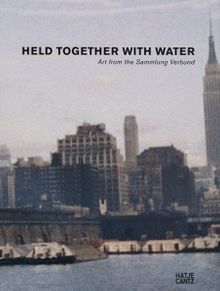 Held Together with Water
Held Together with Water
Art from the Verbund Collection
Published by Hatje Cantz.
Edited by Gabriele Schor. Preface by Peter Noever. Text by Thierry de Duve, Edith Futscher, Yve-Alain Bois, et al.
PUBLISHER
Hatje Cantz
BOOK FORMAT
Hardcover, 9.25 x 11 in. / 392 pgs / 500 color.
PUBLISHING STATUS
Pub Date 10/1/2007
Out of print
DISTRIBUTION
D.A.P. Exclusive
Catalog: FALL 2007 p. 138
PRODUCT DETAILS
ISBN 9783775719537 TRADE
List Price: $50.00 CAD $60.00
AVAILABILITY
Not available
STATUS: Out of print | 11/28/2010 For assistance locating a copy, please see our list of recommended out of print specialists |
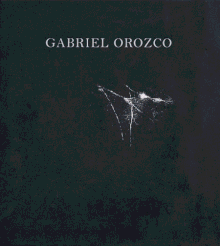 Gabriel Orozco
Gabriel Orozco
Published by Turner/A&R Press/Conaculta-INBA.
Text by Yve-Alain Bois, Benjamin H.D. Buchloh, Briony Fer.
PUBLISHER
Turner/A&R Press/Conaculta-INBA
BOOK FORMAT
Hardcover, 11.5 x 12.25 in. / 360 pgs / 700 color.
PUBLISHING STATUS
Pub Date 4/1/2007
Out of print
DISTRIBUTION
D.A.P. Exclusive
Catalog: FALL 2007 p. 74
PRODUCT DETAILS
ISBN 9789689056065 TRADE
List Price: $90.00 CAD $110.00
AVAILABILITY
Not available
STATUS: Out of print | 5/26/2013 For assistance locating a copy, please see our list of recommended out of print specialists |
 Bonnard
Bonnard
Published by Ludion.
Essays by Yve-Alain Bois, Sarah Whitfield and Georges Rocque.
PUBLISHER
Ludion
BOOK FORMAT
Clothbound, 8.75 x 10.5 in. / 400 pgs.
PUBLISHING STATUS
Pub Date 4/1/2006
No longer our product
DISTRIBUTION
D.A.P. Exclusive
Catalog: SPRING 2006 p. 5
PRODUCT DETAILS
ISBN 9789055446049 TRADE
List Price: $60.00 CAD $70.00
AVAILABILITY
Not available
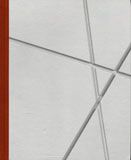 Fred Sandback: Being in a Place
Fred Sandback: Being in a Place
Published by Hatje Cantz.
Edited by Friedemann Malsch and Christiane Meyer-Stoll. Essays by Yve-Alain Bois and Thierry Davila.
PUBLISHER
Hatje Cantz
BOOK FORMAT
Hardcover, 8 x 10 in. / 296 pgs / 24 color / 120 bw.
PUBLISHING STATUS
Pub Date 3/1/2006
Out of print
DISTRIBUTION
D.A.P. Exclusive
Catalog: SPRING 2006 p. 106
PRODUCT DETAILS
ISBN 9783775717205 TRADE
List Price: $55.00 CAD $65.00
AVAILABILITY
Not available
STATUS: Out of print | 11/28/2010 For assistance locating a copy, please see our list of recommended out of print specialists |
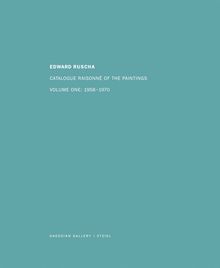 Ed Ruscha: Catalogue Raisonné of the Paintings, Volume One
Ed Ruscha: Catalogue Raisonné of the Paintings, Volume One
1958-1970
Published by Steidl.
Essays by Yve-Alain Bois and Walter Hopps.
Set in Franklin Book type and printed on acid-free, 170-gram Job Parilux paper, each volume of the catalogue has a stitched binding and a cloth cover with silver-colored embossing protected by an embossed slipcase. Specifications for subsequent volumes are the same. All reproductions were converted to digital form, thanks to which process it has been possible to restore the reproductions of long-lost paintings.
PUBLISHER
Steidl
BOOK FORMAT
Clothbound, 9.5 x 11.5 in. / 469 pgs / 161 color / 10 bw.
PUBLISHING STATUS
Pub Date 3/2/2004
Out of print
DISTRIBUTION
D.A.P. Exclusive
Catalog: SPRING 2004
PRODUCT DETAILS
ISBN 9783882439724 TRADE
List Price: $200.00 CAD $270.00
AVAILABILITY
Not available
STATUS: Out of print | 00/00/00 For assistance locating a copy, please see our list of recommended out of print specialists |
Ellsworth Kelly: Tablet 1948-1973
Published by The Drawing Center.
Edited by Catherine de Zegher. Introduction by Yve-Alain Bois and Yves Aupetitallot.
PUBLISHER
The Drawing Center
BOOK FORMAT
Hardcover, 13 x 9.75 in. / 208 pgs / 188 color
PUBLISHING STATUS
Pub Date 6/15/2004
Out of print
DISTRIBUTION
D.A.P. Exclusive
Catalog: SPRING 2005 p. 146
PRODUCT DETAILS
ISBN 9780942324174 TRADE
List Price: $50.00 CAD $60.00
AVAILABILITY
Not available
STATUS: Out of print | 6/1/2005 For assistance locating a copy, please see our list of recommended out of print specialists |
